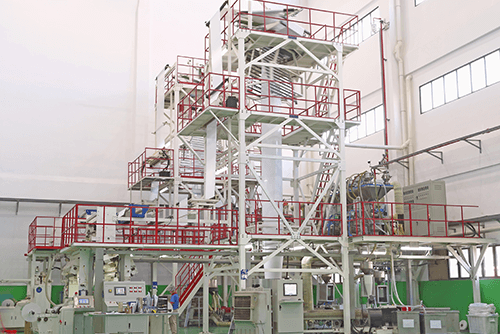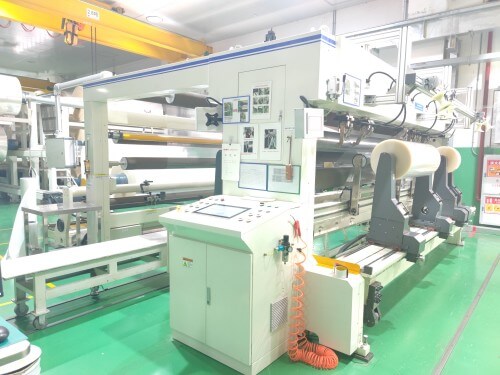What is PE?
PE film is known for its flexibility, durability, and wide range of applications in packaging, agriculture, construction, and other industries.
PE film offers versatility, strength, and moisture resistance, and is widely used for packaging and various industrial applications.
Strength and tear resistance
Moisture Barrier
Chemical resistance
Clarity
Recyclability
Widely used for heat sealing
PE Series
PE Classifications
These types include High-Density Polyethylene (HDPE), Low-Density Polyethylene (LDPE), Linear Low-Density Polyethylene (LLDPE), and Ultra-High Molecular Weight Polyethylene (UHMWPE).
LDPE
Odorless, tasteless, non-toxic, with a non-glossy surface and milky-white waxy particles.
It has a density of approximately 0.920 g/cm³ and a melting point ranging from 108°C to 126°C.
Insoluble in water, slightly soluble in hydrocarbons, etc.
It can withstand the corrosion of most acids and alkalis, has low water absorption, maintains flexibility at low temperatures, and exhibits high electrical insulation properties.
Primarily used as agricultural film, industrial packaging film, pharmaceutical and food packaging film, mechanical parts, daily necessities, construction materials, wire, cable insulation, coatings, and synthetic paper, among other applications.
LLDPE
Compared to LDPE, LLDPE possesses excellent environmental stress crack resistance, electrical insulation properties, higher heat resistance, impact resistance, and puncture resistance.
Can be used for the production of films, daily necessities, pipes, wires, cables, and other applications.
HDPE
Can be used for the production of thin film products, daily necessities, various sizes of hollow containers for industrial use, pipes, rolling belts and strapping for packaging, ropes, fishing nets, and braided fibers, wires, cables, and more.
UHMWPE
It is primarily used in advanced fields such as plastic modification, pipes, high-strength sheets, fibers, and other high-end applications.
PE Film Production Ways
Film Blowing PE
Typically, this process involves extruding a polymer into a tubular film shape. In a favorable molten state, the tube is inflated to the desired thickness using high-pressure air and, after cooling and solidification, becomes a thin film.
PE produced by the blow molding process has a lower cost, making it the most widely used.

Cast Extrusion PE
The cast extrusion process involves heating, melting, and plasticizing a polymer, which is then extruded through a die. Under the action of traction, it undergoes stretching and, after cooling and solidification on cast rollers, forms the cast extrusion film.
The cast extrusion polyethylene film has uniform thickness, but due to its higher cost, it is rarely used.

The Advantages of PE Films
PE film is one of the most commonly used materials in packaging, and it has the following advantages:
- Good Transparency: PE film has excellent transparency, allowing ample light transmission and a favorable lighting environment. It is suitable for applications such as greenhouse covering materials and packaging.
- Corrosion Resistance: PE film exhibits excellent corrosion resistance and is not easily corroded by chemicals such as acids, alkalis, and salts. Therefore, in certain special environments, PE film can act as a protective barrier, extending its lifespan.
- Heat Resistance: It has high heat resistance and is capable of withstanding usage in high-temperature environments without melting or deformation. It is suitable for protective materials in high-temperature regions.
- Cold Resistance: PE film demonstrates good cold resistance, maintaining flexibility even in frigid environments. It is suitable for freezer packaging.
The applicable temperature range is -70°C to 150°C, with a melting point of 260°C and a softening point of 230-240°C.
- Lightweight High Strength: It is a lightweight material with high strength, resisting easy breakage. It possesses a certain degree of toughness and elasticity, making it suitable for packaging and strapping applications.
- Abrasion Resistance: The smooth surface of PE film is resistant to wear, ensuring a longer lifespan through good abrasion resistance.
- Good Interference Resistance: PE film has good interference resistance, remaining unaffected by external factors such as waterproofing, dust resistance, and antistatic properties. It can meet the diverse requirements of different application scenarios.
- Plasticity: PE film exhibits good plasticity, making it easy to process into various shapes of film products, such as bags and film rolls. It is widely used in various fields.
- Environmental Friendliness: PE film is an environmentally friendly material that can be recycled, with low energy consumption and carbon dioxide emissions, causing no pollution to the environment.
- Low Cost: The production process of PE film is simple, and the raw material cost is relatively low, making it more cost-effective compared to other film materials. It is also easy for large-scale production.
The Weakness of PE Films
Usages of PE Films
Plastic Packaging
Due to its excellent physical flexibility and cost-effectiveness, it is widely used in the production of packaging bags, cling film, bubble wrap, air cushion bags, and more.
Moreover, PE film plays an irreplaceable role in food packaging.
It not only helps maintain the freshness and nutritional content of food but also possesses excellent transparency and moisture resistance, providing consumers with a better visual experience and quality assurance.
Agriculture
In the agricultural sector, PE film is playing an increasingly crucial role.
It provides excellent protection and a conducive growth environment for crops.
For example, PE film covering fruit trees can shield fruits from wind, rain, and pests, thereby enhancing yield and quality.
Additionally, PE film is utilized in the construction of agricultural greenhouses, crop covers, compost covers, and more, contributing to increased agricultural production efficiency and ecological benefits.
Architecture
For instance, adding PE film on the waterproof layer of roofs and ground can effectively ensure the dryness and stability of the building structure.
Integrating PE materials into thermal insulation layers can also efficiently prevent heat loss, contributing to energy conservation and emission reduction.
Furthermore, PE film finds use in the creation of isolation layers, landscape covers, and protective walls.
Medical
For example, in environments like operating rooms, doctors use instruments with plastic film to ensure cleanliness and hygiene during surgeries.
Additionally, PE film is used in the packaging of certain medical instruments to enhance product durability and protection.
Sustainable Packaging – Single PE Material
According to the Circular Economy Design Guide by the European Circular Economy for Flexible Packaging organization (CEFLEX), the term “single PE material” primarily refers to a single polyolefin material, specifically either single polypropylene (PP) or single polyethylene (PE), with a weight ratio exceeding 90%.
Other barrier components, such as SiOx, AlOx, aluminum coating, and EVOH, are allowed in a maximum weight ratio of 5%. Currently, this definition is widely accepted within the industry.
According to the analysis from the Smithers research report, currently, the main types of single-material plastic packaging films include polyethylene (PE), polypropylene (PP), and recycled cellulose fiber (RCF).
Among them, the dominant players in the market are PE and PP, accounting for 50% and 41.7% of the global market share of single-material plastic films, respectively.
Start With KDW
+86 13559233681(Wechat, Whatsapp)
No1, Anbian Rd, Torch High-Tech Zone (XiangAn), Xiamen, Fujian, China
